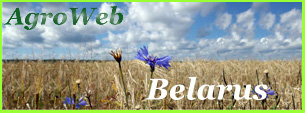Statistical source on Europe, Central Asia - 2014
For a detailed view of the latest trends and factors governing food and agriculture in Europe and Central Asia, FAO’s new Statistical Yearbook for the region is a must-read.
The Yearbook is a reference point on the social, economic and environmental dimensions of agriculture for policymakers, donor agencies, researchers and analysts as well as the general public. Read on for a few of the highlights.
Population decline, movement
Europe and Central Asia is the second most populous of all the major world regions, with almost 13 percent of total world population (902 million) вАУ but its population has largely stopped growing. In fact, of the region’s 53 countries, 15 saw their populations shrink during the 2000-2010 decade, while the growth rate in 24 other countries was between zero and a fraction of 1 percent.
A clear trend in all countries in the region was a flight from the land. Agricultural populations everywhere in Europe and Central Asia have plunged over the last decade.
Greenhouse gases
As the largest user of natural resources such as land and water, agriculture is one of the human activities that have a significant impact on the environment. The Europe and Central Asia region contributed 14 percent of global warming greenhouse gas emissions from agriculture in 2010, while Asia and the Pacific accounted for just over 50 percent.
An estimated 3.3 giga-tonnes of those greenhouse gases come from the production of food that is never eaten. The total annual cost of food wastage and loss, expressed in producer prices, is US$750 billion.
Organic agriculture booming
Globally, organic farming has grown more than six-fold in the last few years, from 5.4 million hectares, or 0.11 percent of world agricultural land in 2004, to 36 million, or 0.76 percent in 2009. Europe and Central Asia accounted for 26 percent of total world organic cropland.
Total per capita food production in the region rose faster than anywhere else in the world during the past decade. Yet, a challenge for Europe and Central Asia is to reduce the wide disparities in farm productivity and incomes.
Food prices
With some exceptions, food price volatility in Europe and Central Asia has eased off considerably since 2010. High food-price inflation is more typical of the eastern part of this region. The countries most affected by food price volatility are Tajikistan, Ukraine and Serbia, where producers’ cereal prices leapt between 52 and 136 percent in the 2009-2010 period.
The FAO Statistical Yearbook 2014 вАУ Europe and Central Asia food and agriculture contains new, updated and more detailed data on food prices, farm productivity and incomes, land ownership, organic agriculture and more. It is an example of FAO’s work in the provision of reliable, coherent, systematic statistical resources вАУ which are crucial in designing effective public policy.
2 September 2014, Budapest, Hungary




